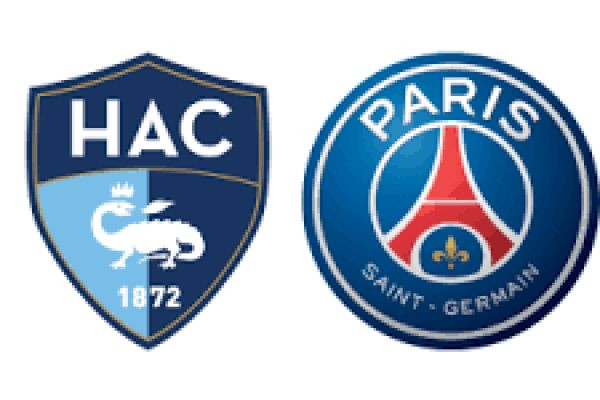The contest between Paris Saint-Germain (PSG) and Le Havre Athletic Club (HAC) represents a classic Ligue 1 dynamic: the overwhelmingly dominant possession team meeting a highly disciplined, defensively organized underdog. PSG’s challenge will be finding space; Le Havre’s will be surviving the inevitable periods of suffocating pressure.
Paris Saint-Germain: Positional Dominance and Overloads
PSG, typically lining up in a 4-3-3 or 4-2-3-1, will aim for near-total territorial and possessional control. Their strategy is systematic: patient build-up to draw Le Havre out, followed by rapid positional shifts to create overloads in critical areas.
PSG's Offensive Strategy: The Full-Back/Winger Dilemma
The primary objective is to break the low defensive block.
Central Creation: The central attacking midfielder or the deepest forward (like a false nine) must drop into the midfield to act as a passing hub. This draws a Le Havre defender out of shape, which is the cue for others to attack the space.
Wide Overloads: PSG's full-backs will push extremely high, essentially acting as wingers, while the traditional wingers (or the star forward) will drift into the half-spaces (the channels between the center-back and the full-back). This 2v1 pressure on Le Havre's wide defender is designed to create a crossing opportunity or a cut-back into the box.
Individual Brilliance: When the structured attack stalls, PSG relies heavily on their elite attackers to make the difference. A moment of speed, a precise dribble, or an impossible through-ball is often the key to unlocking the defense. Kylian Mbappé’s movement, whether cutting in from the left or darting behind the defensive line, will be Le Havre’s biggest headache.
PSG's Defensive Vulnerability: The Transition
Because PSG commits so many players forward, their main defensive risk is during the transition phase. If Le Havre manages a clean tackle and launches a quick counter-attack, PSG's high full-backs leave significant open space behind them, especially the large channel next to the recovering center-backs. The defensive midfielder must be excellent at screening and providing cover.
Le Havre Athletic Club: Resilience and Verticality
Le Havre, likely to field a deep 5-4-1 or 5-3-2, will prioritize defensive structure and relentless effort over possession. Their aim is not to beat PSG on the ball count, but on the scoreboard via efficiency.
Le Havre's Defensive Strategy: The Low Block
Le Havre's defensive plan will be a masterclass in deep, organized defending.
Compactness is Key: The central area must be absolutely impenetrable. The four midfielders and the five defenders will collapse inward, minimizing the distance between the lines and forcing PSG's play into the less dangerous wide areas.
Midfield Screen: The midfield line must perfectly track PSG’s dynamic '8s' and block the passing lanes to the forward line. Every PSG pass into a central forward player must be contested immediately.
Patience and Concentration: Defending against PSG requires immense concentration for 90 minutes. Le Havre must maintain their shape, refusing to be pulled out of position by the rotations and dummy runs until the very last minute.
Le Havre's Offensive Strategy: The Direct Counter
Le Havre's attacks will be quick and vertical, relying on bypassing the PSG midfield entirely.
The Outlet Pass: The immediate goal upon winning the ball is the first pass—a long, accurate ball over or around the high-pressing PSG midfield, aiming for the feet or the run of the lone striker.
Speed on the Flanks: The wing-backs and the supporting wide midfielders must sprint forward to support the striker, exploiting the space left vacant by PSG's attacking full-backs. The counter-attack must be executed in 3-4 passes max before PSG's defenders can recover.
Set Piece Reliance: Corner kicks and free kicks become vital scoring opportunities. Le Havre must be clinical and physical in the air against PSG's defense during these dead-ball situations.
The Decisive Tactical Battles
1. The Central Midfield Screen
The ability of Le Havre's central midfield to track, hustle, and deny central penetration against PSG’s dynamic midfielders (often Vitinha, Zaire-Emery, etc.) will determine how close PSG gets to goal. If Le Havre's screen is bypassed, their back five will be exposed.
2. The Final Third Perimeter
PSG will have dozens of touches just outside the penalty box. Le Havre’s defenders must be disciplined enough to block passing lanes rather than lunging for the ball, which would lead to penalties or free kicks in dangerous areas. The battle here is mental as much as physical.
3. PSG’s Turnovers
The match is likely to be decided in the moments immediately after a PSG player loses the ball in the attack. If Le Havre can immediately release their fastest players into the wide channels before PSG's full-backs can sprint back, they stand a chance of scoring an upset goal. If PSG counter-presses effectively, they extinguish the threat instantly.
Expect a match dominated by PSG possession (70%+) with Le Havre weathering the storm and looking for 1-2 critical moments on the break.
(Word count: 687)








